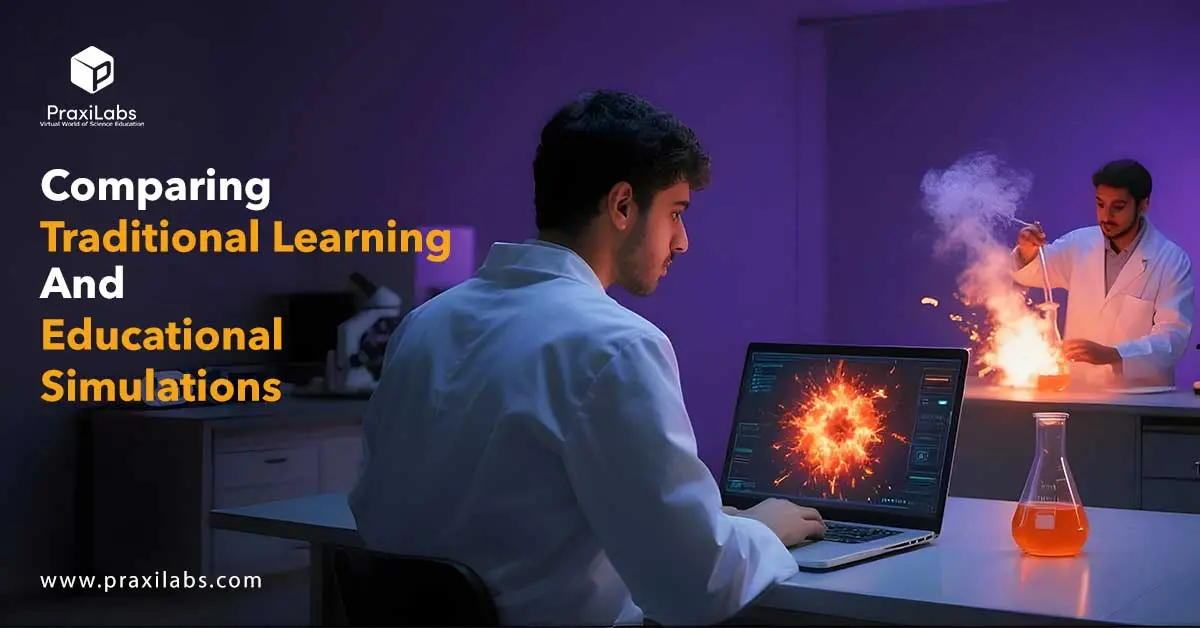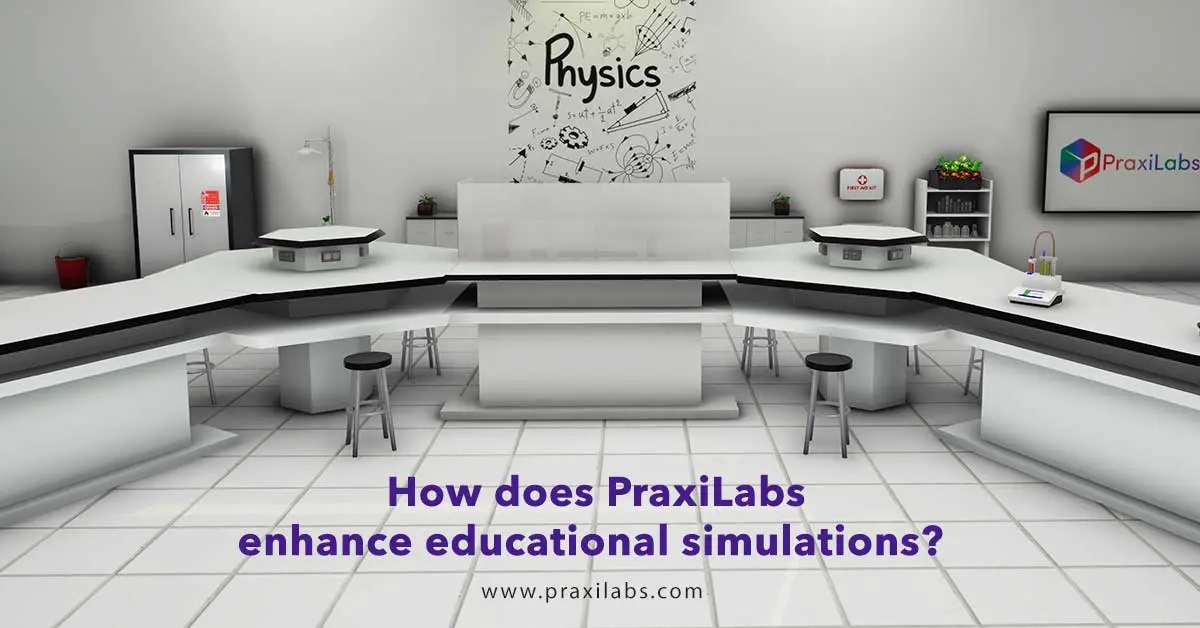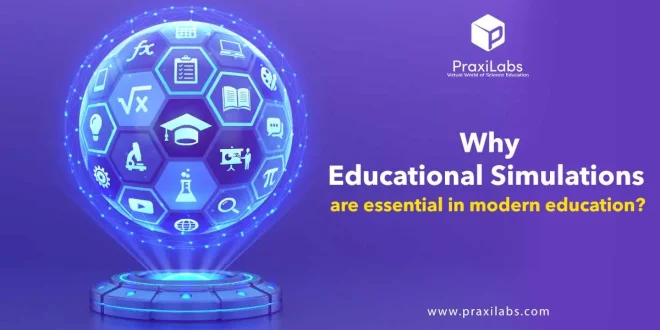Last Updated on October 23, 2025 by Muhamed Elmesery
In today’s fast-evolving world, traditional teaching methods alone can’t keep up with the demands of modern learners. Educational simulations have emerged as a powerful solution—bringing concepts to life through immersive, hands-on experiences that boost engagement, understanding, and retention.
By allowing students to experiment safely, make decisions, and instantly see the results, simulations bridge the gap between theory and practice. They prepare learners for real-world challenges while fostering curiosity, confidence, and critical thinking—making them an essential part of modern education.
Table of Contents
What are educational simulations? | Definition of Simulation in Education
Educational simulations are realistic and interactive teaching methods or instructional scenarios that rely on replicating real-world situations, tasks, and challenges in a controlled environment.
These simulations help students to learn and understand more effectively. Simulations provide flexibility, students can learn anytime and anywhere without any risks or pressure. Teachers can use educational simulations in several subjects such as chemistry, physics, engineering, biology, and more!
Explore : Why Every University Should Use a STEM Virtual Lab?
Types of educational simulations
There are several types of simulations in education, let’s explore some of them:
Interactive online simulation
- online simulations for students is a simulation offered online, where the learner interacts directly with its elements (buttons, dragging, setting variables) and the results appear immediately.
- It allows access from anywhere, instant results updates, and strong interaction that motivates the learner.
- But it requires good infrastructure (a stable internet connection and suitable devices) and may be limited in complexity compared to specialized simulations.
Digital Simulation
- It relies on the use of software or digital tools to simulate phenomena or systems.
- It may run on desktop computers or tablets, enabling the modeling of complex systems, recording performance logs, and facilitating easy repetition and experimentation.
- But it requires specialized programming and may not accurately replicate reality in all cases.
Descriptive simulation
- It relies on a narrative description or a detailed scenario presented to the learner to analyze and mentally interact with (it is usually not an interactive environment in the technical sense).
- It is useful for presenting concepts and stories, stimulating analytical thinking, suitable when it is difficult to simulate the entire process
- However, it is less interactive, and may not allow testing variables or practical experimentation.
Benefits of using educational simulations
One of the most important benefits of simulation in education is that they provide an interactive learning experience; educational simulation is not just video clips, but is fully interactive and immersive, guiding students to:
- Select materials.
- Make preparations.
- Make decisions.
- Receive immediate feedback and corrections.
They enhance students’ understanding and critical thinking, thereby significantly improving their learning outcomes.
Students can repeat and interact with the learning materials anytime and anywhere, supporting mastery through continuous practice, learning from mistakes, and self-directed learning.
The subscription costs for platforms that offer interactive educational simulations are much lower than the costs of setting up an actual laboratory or classroom with its expensive equipment and resources.
Virtual simulations offer a safe, risk-free environment where students, for example, can conduct chemistry experiments that might be dangerous without being exposed to real hazards. The virtual lab is ideal for beginners, as there is no need for costly equipment or specialized safety procedures.

Comparing traditional learning and educational simulations
| Aspect | Traditional Learning | Educational Simulations |
| Learning Approach | Based on lectures, textbooks, and physical labs focused mainly on theory. | Uses interactive, virtual environments for hands-on learning. |
| Engagement | Often passive and teacher-centered. | Highly engaging and student-centered. |
| Safety & Cost | May involve safety risks and high equipment costs. | Completely safe and cost-effective with no physical materials needed. |
| Flexibility | Limited to specific times and locations. | Accessible anytime and anywhere; supports self-paced learning. |
| Feedback & Assessment | Feedback is delayed and mainly provided through grading. | Provides instant, interactive feedback to enhance understanding. |
| Repetition & Practice | Limited by resources and time. | Experiments can be repeated an unlimited number of times for mastery. |
How do simulations support teaching strategies?
- The use of interactive simulations in teaching strategies has proven effective, as it provides tangible improvements in learning flexibility, safety, accessibility, and interactivity, in addition to reducing operating costs.
- It offers students an enjoyable and practical way to understand how real scientific investigations are conducted. Instead of merely memorizing the steps — question, hypothesis, experiment, data collection, and conclusion — learners actively engage in each stage through virtual experiments and data analysis.
- According to a series of studies that used a qualitative approach, reflective journals and focus group interviews were employed to collect data. The participants (a total of 81 students) were undergraduate nursing students, second-year public health nursing students, and students in teacher training programs (healthcare).
- The interviews were conducted shortly after the students had performed the simulation activity. The students expressed that the simulation provided a higher degree of realism and seriousness compared to skills training. They felt that the simulation was a teaching method in which they experienced real emotions and stress in critical situations.
- The students learned that in emergencies, good communication is essential for making the correct decisions. The simulation was considered one of the most effective ways to prepare them for a nursing career. They gained experience by describing the course of events during the information extraction process and receiving feedback from other students to identify gaps in their knowledge.
Explore Praxilabs’ Science Simulations Catalog

How does PraxiLabs enhance educational simulations?
With PraxiLabs, one of the leading simulation platforms in education, students actively learn while conducting their experiments by our educational simulation software.
Students gain a complete experience, with guidance and educational materials that assist them throughout the learning process rather than just observing experiments.
We not only provide each student with a virtual physics lab, but we also enrich their knowledge and understanding through immersive virtual experiments across a variety of subjects.
Every student absorbs knowledge in a different way. While classroom lectures, textbooks, and lab experiments suit certain learning styles, PraxiLabs combines the virtual lab, multimedia, and supplementary texts to provide a learning experience tailored to each learner’s individual style.
PraxiLabs also offers customized simulations and virtual lab solutions specifically designed to meet the needs of each institution. We provide a virtual science lab guide that teaches students safety precautions and proper behavior before entering actual labs, protecting them from potential mistakes and saving institutions the costs of damage and accidents.
Frequently Asked Questions
What is simulation-based learning?
Type of learning depends on replicating real-world situations, tasks, and challenges in a controlled environment.
How can simulations help students apply theoretical concepts?
By providing a safe, interactive, and controlled environment that enables students to understand and apply theoretical concepts.
What are the benefits of using digital simulations for science education?
By making abstract concepts tangible, allowing for safe, hands-on exploration, and providing interactive, personalized learning experiences.
 PraxiLabs A virtual world of science
PraxiLabs A virtual world of science






